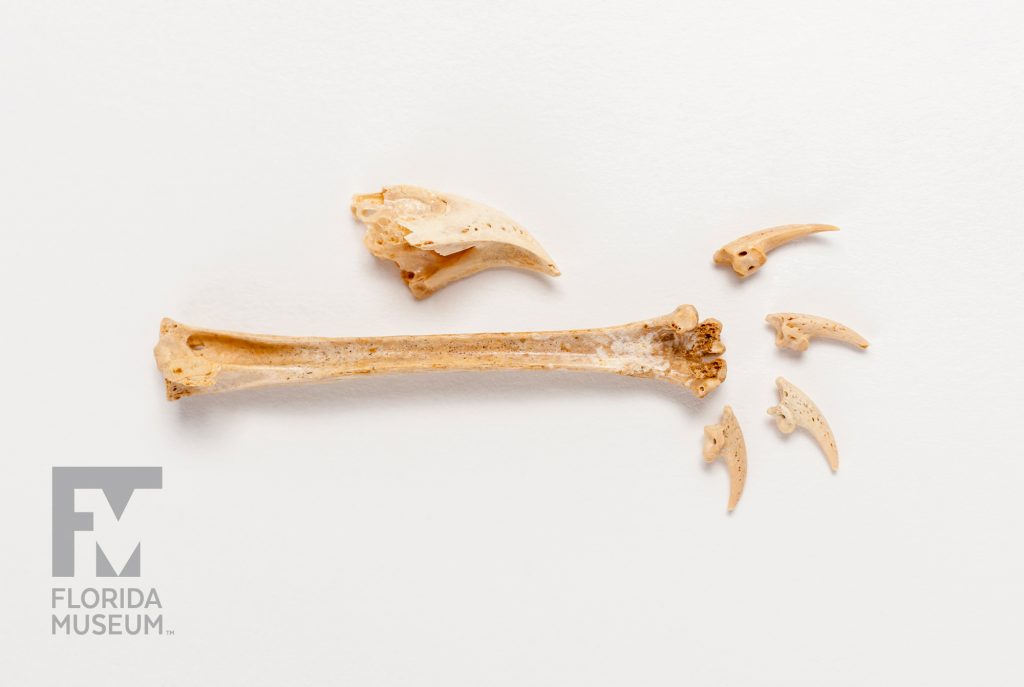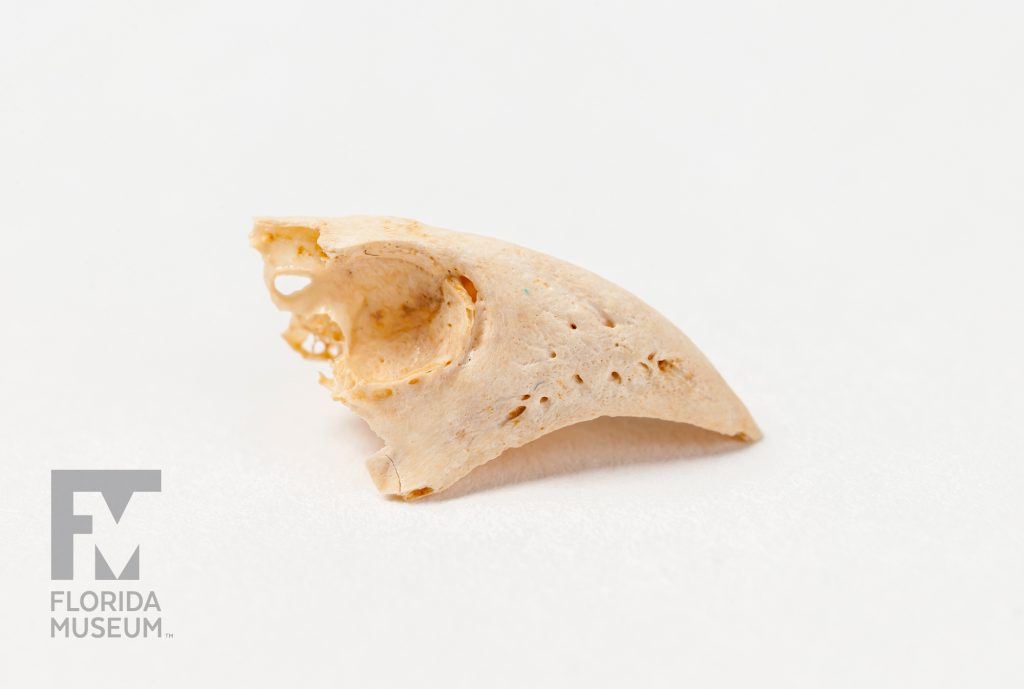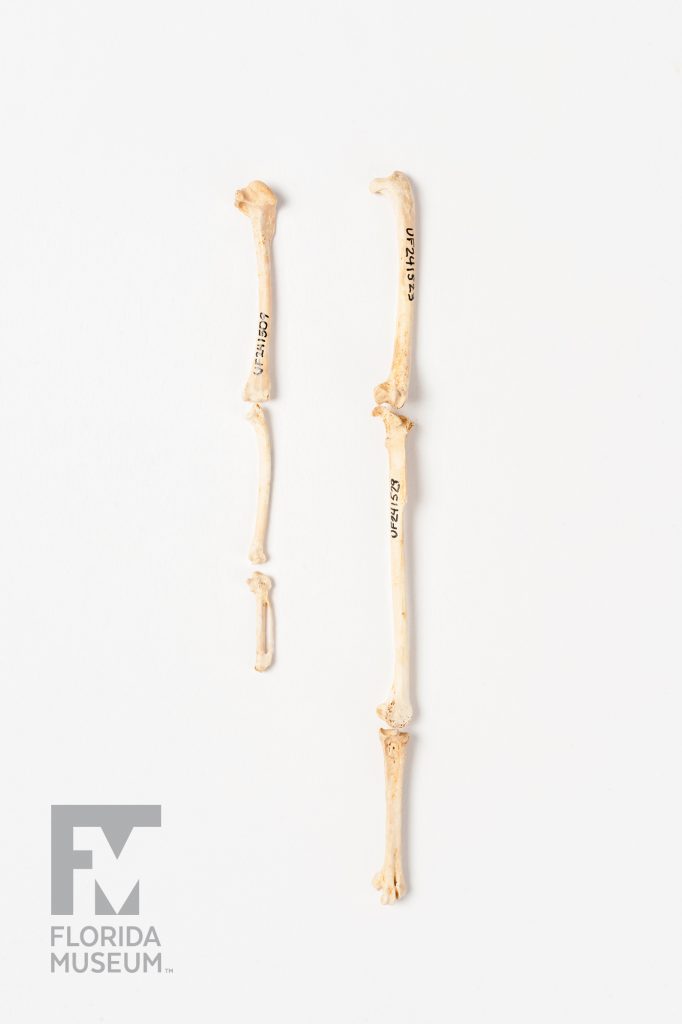Fossils recently discovered inside a flooded sinkhole reveal a lost world of animals that once lived on islands in the Bahamas. The most abundant fossils found are from small animals, such as these birds that died out after the end of the last ice age.
Summary
Flightless Rail Wing and Leg Bones (Rallus cyanocavi; extinct)
Burrowing Owl Beak and Talons (Athene cunicularia; extinct on island)
Found in Abaco, Bahamas
Lived ~15,000 years ago (late Pleistocene)
Collection
Story
When the scuba divers initially found fossils of large tortoises and crocodiles in this blue hole on Abaco Island in the Bahamas that made a huge splash in the paleontological community. But after several dives they started to look a little closer in the sediment in the bottom of the blue hole and they noticed little bitty, sort of toothpick-like, bones that were lying in the sediment. So they started to collect those bones just by scooping up the sediment in big Ziploc bags and bringing it up to the surface and we would run the sediment through fine mesh sieves down to window screen (16th-inch) and we discovered tens of thousands of fossils of little bitty species from this same blue hole called Sawmill Sink.
So we’re finding bones – of geckos, of frogs, of hummingbirds, of little songbirds, of bats, of rodents –all kinds of small species, that on one hand aren’t as spectacular as something like a tortoise or a crocodile but on the other hand that’s where most of the world’s biodiversity is – among small species. So if we want to understand processes of evolution and extinction on islands, we’re only getting a small part of the picture if we focus just on the large species.
So very intensely over the last decade we’ve been studying these thousands and thousands of fossils of small species, and in fact from this blue hole now we’ve hit almost a hundred species. We’re up to 98 species of vertebrates that we’ve identified from these small fossils which date to the end of the ice age about 15,000 years ago.
David Steadman
Curator, Ornithology*
Florida Museum of Natural History
Additional Information
Listen to more about the Flightless Rail (Rallus cyanocavi):
Listen to more about the Burrowing Owl (Athene cunicularia):
Blue Hole
Blue holes are round marine caverns or sinkholes with steep walls that are filled with fresh and salt water. Because they have poor water circulation and lack oxygen below a certain depth, blue holes don’t support a wide variety of life larger than bacteria.
Read more:
- Fossils from Bahamian Blue Hole may give clues to early life
- Protecting a sunken ancient world
- Extinct tortoise yields oldest tropical DNA
Exhibit
On display Sept. 23, 2017-Jan. 7, 2018, Rare, Beautiful & Fascinating: 100 Years @FloridaMuseum celebrated the Museum’s rich history. Each Museum collection was asked to contribute its most interesting items and share the stories that make them special. Though the physical exhibit is closed, this companion website remains online, providing an opportunity to experience the Florida Museum’s most treasured specimens.
Exhibit Area: Objects Tell Stories
Theme: Humans Cause Change
 Want to see more? Explore more than 300 breathtaking color photos of plants, animals, fossils and cultural heritage materials from the Florida Museum of Natural History’s collections in the award-winning book All Things Beautiful available from the University Press of Florida.
Want to see more? Explore more than 300 breathtaking color photos of plants, animals, fossils and cultural heritage materials from the Florida Museum of Natural History’s collections in the award-winning book All Things Beautiful available from the University Press of Florida.
*This title was accurate at the time the exhibit was on display in 2017. Please visit the collection website to verify current staff and student information.


